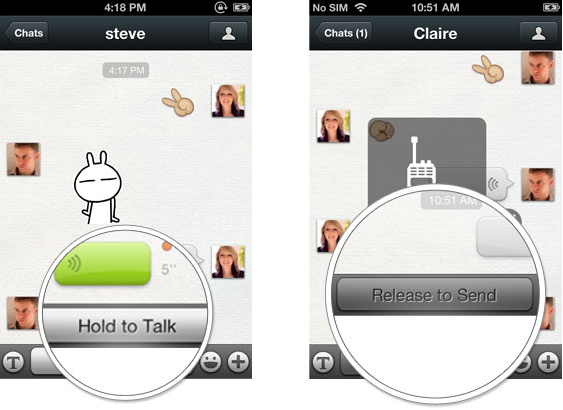WeChat Isn't a Messaging App - A Closer Look at China's Hottest App

My parents currently live in China and they, like pretty much all of China nowadays, actively use WeChat. The last year, I’ve used WeChat more and more to communicate with them, but I could never understand why they and so many others were so drawn to WeChat over alternative messaging apps like iMessage. Despite a clunky interface, slow load times, and a design language that feels more 2008 than 2013, WeChat’s Chinese adoption numbers have been off the charts, with over 400 million worldwide users and no signs of slowing in Asia.
I’m currently home in China for the holidays and I’ve had some time to observe how my parents are using WeChat, how my sister is using it, and how strangers on the street and on the subway are using it. What I’ve seen has definitely surprised me.
Most importantly, I’ve noticed that WeChat isn’t a messaging app. I had originally thought that messaging was the main focus of WeChat. Instead, it performs a role best described as an interesting blend between messaging, social gaming, Twitter, and Facebook.
For a lot of people, WeChat is the start and end of their phone usage. Need to talk to someone? Send them a text message or leave them a voice message. Want to see what your friends are up to? Go to “Moments”, where you can view a stream of their activity and post an update of your own. Want to play games? Play from within WeChat.
“Moments” is probably the most used feature of the app. It’s basically a social network that lies adjacent to the app’s basic messaging features, where users have profiles where they can post photos and statuses and change their profile pictures and cover photos. Like Facebook, you can publicly like and comment on posts. However, the “Moments” feature is buried two levels deep, much like how Twitter’s direct messaging functionality was before the most recent update (version 6). To get to it, you have to first enter the Discover tab and before seeing others use it, I had personally never visited it.
The reason why WeChat is doing so well, though, is because its other features are definitely not ignored. WeChat, as an app, is very versatile, leading to insanely high user retention. Its chatting and messaging features, complete with chat backgrounds and stickers, have found popularity amongst the QQ crowd that provided the initial traction for WeChat (it’s interesting to note that QQ and WeChat are both owned by the same company, Tencent, and that they successfully leveraged this existing userbase to launch WeChat). The messaging features serve as a replacement for email, texting, and IM. Like WhatsApp, a lot of people are opting to replace their traditional SMS plans with more data and using WeChat to fill in the gap. Throw in the network effect, and even those that don’t choose to forego SMS find themselves on WeChat more and more as well in order to interact with their friends.

But it isn’t just text messaging that is helping to drive WeChat’s user retention. I was pretty surprised by how popular the walkie talkie (push-to-talk) feature is for communication, which I believe stems from how difficult it is to enter Chinese characters on a phone. It’s not uncommon to see people walking down the street or on the subway, speaking in quick 2 to 3 second bursts on their WeChat accounts. Instead of calling one another, a lot of Chinese people choose to use these walkie talkie conversations, giving them the benefits of asynchronous communication coupled with the power of voice. I’m also suspecting that more and more people are starting to substitute their phone service with WeChat’s walkie talkie feature as well, making an average Chinese user’s phone plan pretty heavily focused on 3G data.
So… what?
WeChat has grown so quickly because of its versatility and all-encompassing nature. I’d guess that the only app a lot of people in China use is, in fact, WeChat. My cousins and my family agree. Tencent would probably agree as well.
Tencent is hedging its bets that WeChat can and will own the entire Chinese Internet market. Just yesterday, they’ve launched Weixin TV, a smart TV completely integrated into WeChat, yet another expansion of the WeChat feature base. Instead of focusing on any one particular product and making it better, they’ve decided to throw literally everything under the WeChat umbrella.
This, precisely, is why I believe WeChat will not find the same success in the American market. What Chinese consumers are looking for is an all-inclusive piece of software that does everything they could ever want, whereas American consumers would rather split time between multiple apps in order to get the best possible user experience. In China, where it really is a winner-take-all situation, this isn’t a bad development strategy, but the Western market is entirely different, where I don’t see WeChat gaining mass adoption, at least in its current state. WeChat is part-Facebook, part-Twitter, part-Instagram, part-Tumblr, part-WhatsApp, part-Skype — it does a lot, but it doesn’t do anything exceptionally well. If WeChat wants to seriously compete in the American market, it will have to not only beat pure messaging apps like WhatsApp and iMessage, but also (and most importantly!) everything else that has been thrown into the mix.